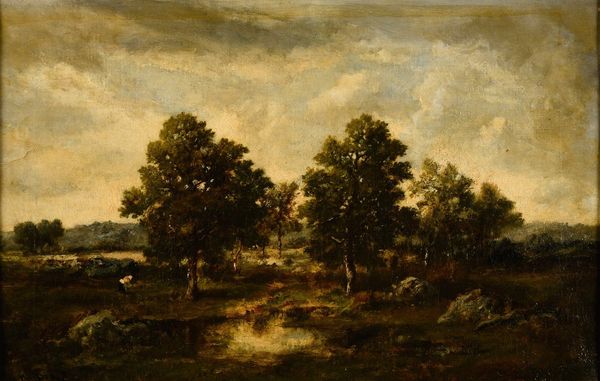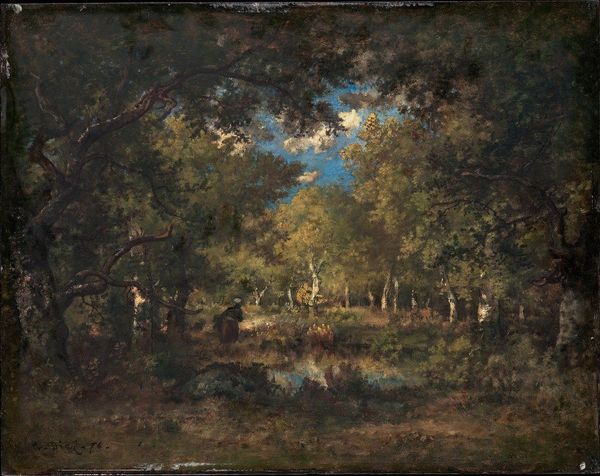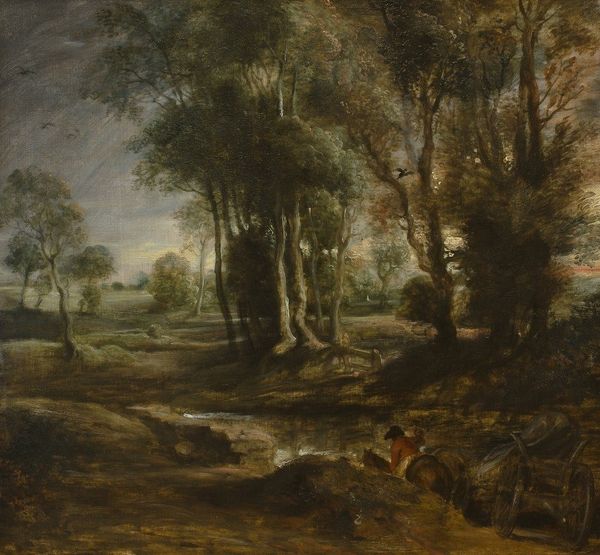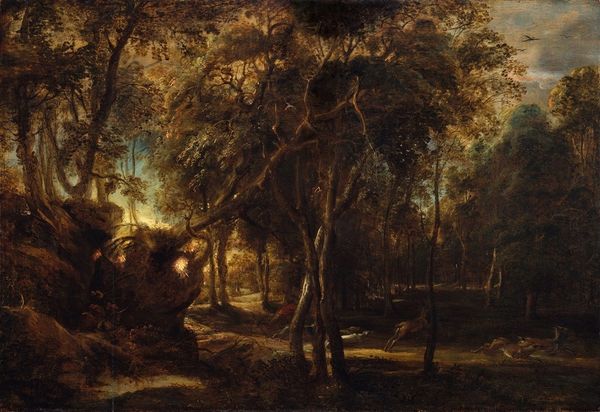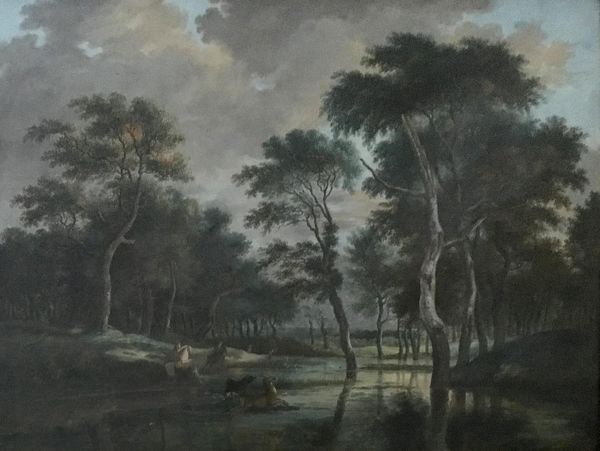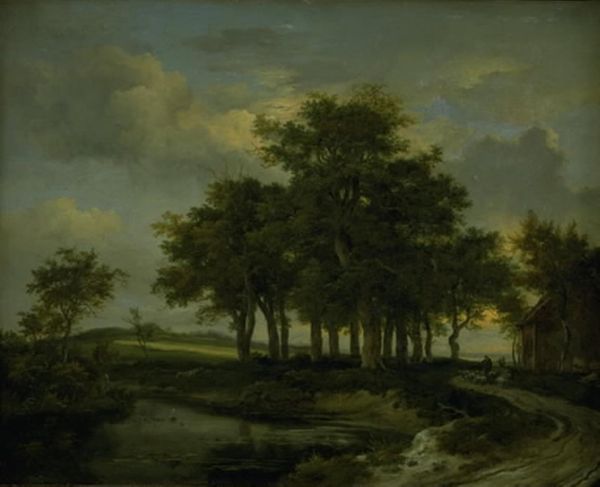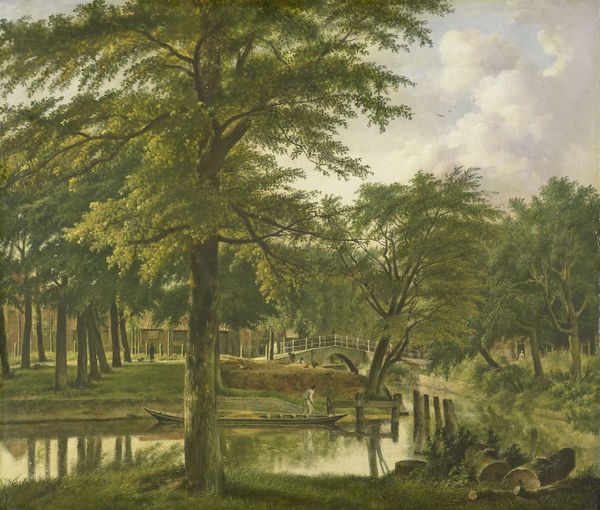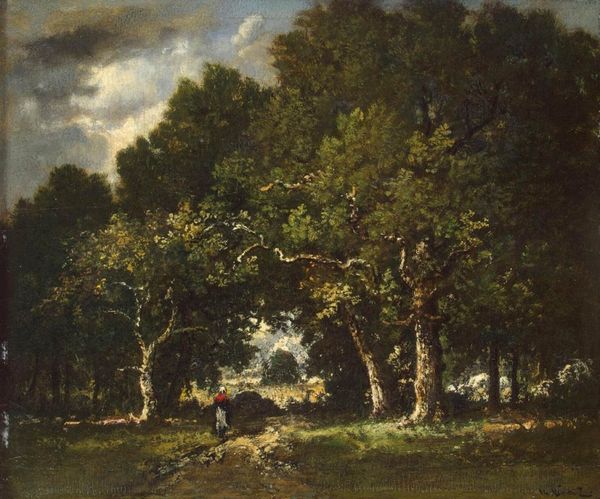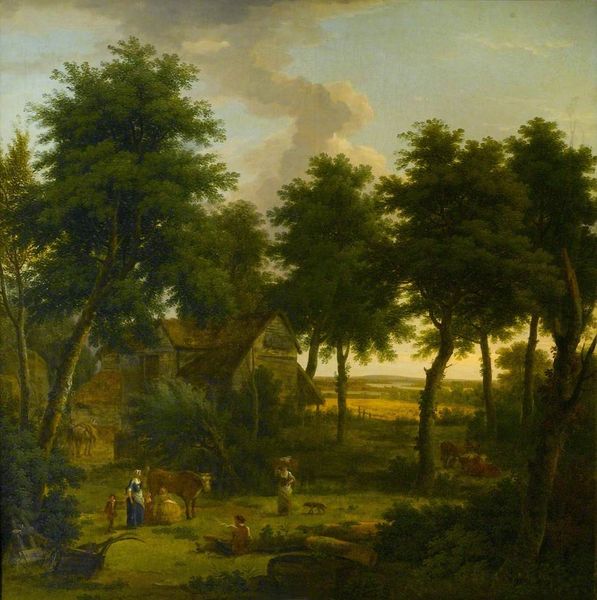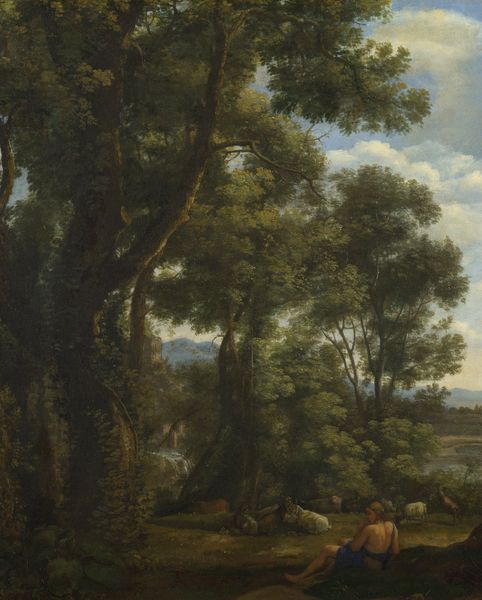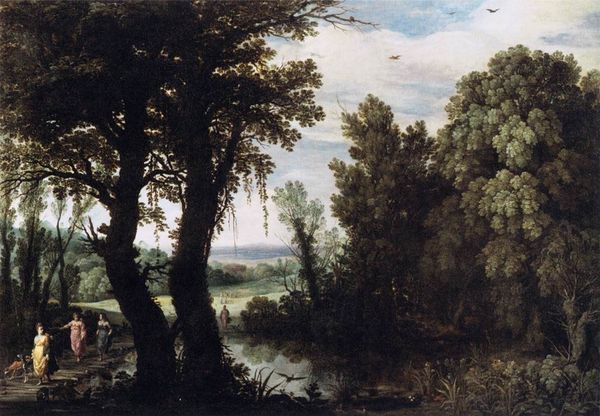
Copyright: Public Domain: Artvee
Editor: We're looking at Narcisse-Virgilio Diaz’s “Pond in the Woods,” painted in 1862 using oil paints. I’m immediately drawn to the density of the woods, this sense of enclosure, and I can't help but think about Romanticism and its focus on nature. What stands out to you? Curator: What I see is a very specific depiction of the forest, one that wasn't simply a picturesque backdrop but an environment deeply connected to social and economic realities. Think about who had access to these woods in 1862, and who was excluded. Editor: So, access as a theme, rather than just an idyllic scene. Curator: Precisely. Consider the figure in the background; most likely, she represents a local inhabitant, perhaps a woman collecting firewood or foraging. This connects the artwork to broader questions around land ownership, resource use, and the roles of women in rural communities. It wasn't just a beautiful scene; it was someone’s backyard, someone’s source of sustenance, or a place where they labored. The act of leisure that comes with visiting these places becomes very charged. Editor: That completely changes my perspective. It's not just a pretty landscape anymore, it has these layers of social commentary. The pond acts as a mirror, reflecting not just the trees, but these unspoken realities. Curator: Exactly! And Diaz, painting en plein air, brings an immediacy to that relationship between the land, the people, and the act of artistic representation. This allows us to ask: Whose story is being told, and from what viewpoint? Editor: It’s incredible how much history and context can be embedded within what seems like a simple landscape. It definitely makes me want to examine these so-called "nature" paintings more critically from now on! Curator: Absolutely. Art becomes much more vibrant when we engage with it as a dialogue between its history, its present interpretations, and ourselves.
Comments
No comments
Be the first to comment and join the conversation on the ultimate creative platform.

